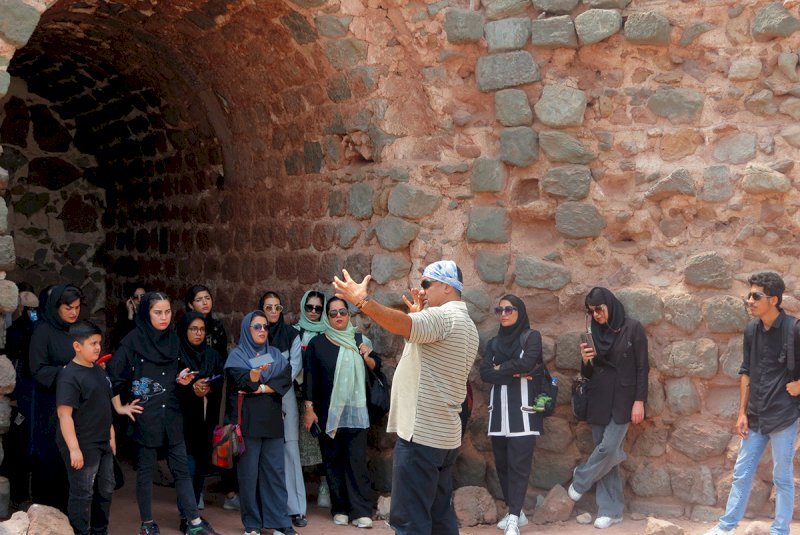Media persons explore Hormuz Island on fam tour

TEHRAN –A number of journalists from different Iranian news organizations have visited the historical island of Hormuz, which is situated in the Persian Gulf, southern Iran, on a familiarization tour.
The one-day tour, which was held on Saturday, aimed to mark the Persian Gulf National Day, which is celebrated annually on April 30, CHTN reported on Sunday.
The tour also aimed at introducing the island’s tourism capacities, the report added.
Hormuz Island is well-known for its eye-catching ochre, a red-colored earth pigment that attracts domestic and foreign nature lovers and holidaymakers.
The island covers an area of approximately 42 square kilometers, most of which is fairly uninhabited. It is sprawled in the Strait of Hormuz, 8km from the mainland.
Most of its visitors are day trippers from adjacent Qeshm Island and Bandar Abbas. The latter is a bustling port city and the provincial capital.
It is probable to traverse much of the land in a single day by car. However, there are a few popular spots, some on the beaches and some in the valleys where eco-tourists prefer to camp out for days. The sunny coastline is made up of a striking blend of golden beaches and amazing cliffs and slopes.
The arid island gets unbelievably hot during midday, so ideally, winter may be the best time to pay a visit. In the summer, its temperate can rise to over 43 °C.
The island also features ruins of Portuguese ramparts with clusters of eroding artillery cannons all around. In the early 16th century, the land was occupied by Portuguese forces who utilized it as a stopover for ships' voyaging to Goa, Gujarat, and nearby Qeshm.
The rugged land is covered by sedimentary rocks, layers of volcanic material, and various minerals that contribute to the formation of fantastic colors, a feature that also attracts miners and exploiters to the region too.
The exploitation of the island’s ocher has been accelerated over the past couple of years, so rising ecological concerns have prompted the Department of Environment to take action to defend the interests of the inhabitants and safeguard the region for future generations.
Traditionally, its reddish soil, which indigenous people call “Golak”, is used for making local foodstuff decorative arts, and even as spices for cooking fish to make pickled vegetables.
ABU/
Leave a Comment